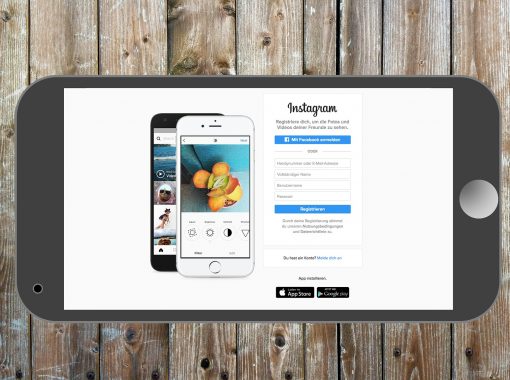
Media Pitching Basics [Template Inside]
When you hear the word “pitch” used in a business setting, you know the person is trying to get others to act — to buy into their idea.
That’s the desired outcome of a media pitch, too. When public relations professionals pitch a media contact, their goal is for that person to act, which in this case, is to pick up their story and create one of their own for their publication.
In the press release distribution process as a whole, media pitching is crucial. It’s a step that requires a blend of data (information from a Media Database) and creativity (skills in crafting pitches that stand out).
In this blog post we’ll cover:
- What’s a media pitch?
- Why are media pitches important?
- How to write a media pitch
- Free media pitch template
What is a Media Pitch?
A media pitch is a brief yet compelling message that’s meant to share a brand’s news and capture the attention of media contacts. The goal is to earn media coverage.
They’re typically sent through email. However, they can also be sent through phone or social media direct messages.
Why are Media Pitches Important?
The entire premise of Shark Tank is centered on the art of the pitch. Entrepreneurs from all over walk into the Tank with the hopes of getting a shark to invest in their business. While their product must be “good,” the bulk of their success lies in their pitch.
It can either help or hurt their chances of securing funding.
The same can be said for media pitching.
While your story must be newsworthy, your media pitch must be written in a way that stands out in a journalist’s inbox, captures their attention, and compels them to act – write a story about your story.
If that didn’t sell you on the importance, here are four more reasons!
Cutting Through Noise
Journalists are constantly bombarded with messages. Their inboxes are overflowing with potential stories. Strong media pitches serve as a filter that helps journalists sift through the stories they should pursue.
Building Journalist Relationships
Media pitching isn’t a one-time thing. It’s a repeated process. That’s why it’s important for public relations professionals to build mutually beneficial journalist relationships.
When you deliver stories that are relevant to their beats and publication, and align with their target audience’s interests, you become a reliable source they can trust.
And, when you become a reliable source they can trust, you become someone they can turn to for valuable content in the future.
Securing Media Coverage
The primary goal of media pitching is securing earned media coverage.
Whether it’s a podcast interview, article feature, or a quote in a blog post, media coverage builds brand awareness and helps companies reach a wider audience than they could on their own.
The exposure brands get from earned media mentions boosts their visibility, credibility and improves their odds of landing better business opportunities.
Managing Public Perception
Earned media coverage is like a vote of confidence that helps shape the public’s perception.
A media pitch is the first step in this process and that’s why it’s important to write and customize your content to speak directly to the recipient.
Your media pitches lead to their stories and their stories lead to a positive influence on the public’s perception of your brand.
How to Write a Media Pitch
Now that you have a better understanding of the importance of putting time and effort into your pitches let’s now take a look at how to write media pitches that get attention.
Here are the must-have components:
Know Your Audience
This step is where the use of a media database is helpful. That’s because a media database will do the heavy lifting of finding the right contacts for your news.
After making a list of contacts, you can customize your pitch to match the journalists’ interests and previous work. This shows them you’ve done your homework.
Write an Attention-Grabbing Subject Line
The first thing journalists see is your subject line. That’s why it’s a portion of your pitch you need to pay attention to. When writing a subject line, make it concise, intriguing, and relevant to the story you’re pitching. Generic and/or clickbait subject lines will either leave your email unread or get sent to the Trash.
Write with a Purpose
Your pitches should get to the point quickly. Journalists don’t have time to read a book to get to meat of your message. Clearly outline the critical elements of your story including the who, what, when, where, and how. If you don’t hook their attention out of the gate, you run the risk of losing their attention…and quickly.
Highlight the Value
What’s in it for them? What about your news would make the recipient care enough to write about it?
Is it timely? Relevant? Unique? Does your story align with their past work and their audience’s interest?
If it checks any or all of these boxes, clearly share that in your pitch.
Include Supporting Details
Always include supporting details like imagery, video links, or other information journalists can use to get a better understanding of your story so they can write theirs.
Personalize your Pitch
Personalization is the media pitching standard now. Journalists can sense when they’re part of a mass send. And when that happens, you tarnish your credibility and reduce your odds of working with them.
Take time to do your research and customize your pitch to speak directly to the recipient. Talk about their past work and how your story aligns with it.
Media Pitch Template
Here’s a sample of one of our nine free, customizable templates our customers can use when they subscribe to our Media Pitching platform.
Hi ((first-name))
Since you cover ((industry)) news and stories, we thought that this would be an interesting story for your audience. We would like to provide you with an exclusive back story of Angle of Press Release.
Here are some highlights:
- Feature 1
- Feature 2
- Feature 3
Should you have any questions, please feel free to reach out. My direct email is (email address).
Full Name
Company Name
Email Address
Meet Our Media Pitching Platform
We included our Media Pitching platform in our Media Suite to serve as the relief valve you need to take the pressure off pitching.
When you subscribe to Media Suite, you’ll enjoy:
- Improved deliverability
- Customization
- AI support
- Ease-of-use
If you’re interested in learning more about our Media Pitching platform, contact us today. Our team’s here to help!











